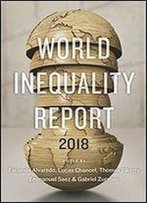
Japan Since 1980 (the World Since 1980)
by Thomas F. Cargill /
2008 / English / PDF
1.4 MB Download
This book tells the story of the performance of Japan's economic
and political institutions starting in the late 1970s through late
2007. The authors explain how Japan's flawed response to new
economic, political, and technological forces requiring more open
markets and more democratic political institutions ushered in a
"lost decade and a half" of economic development from 1990 to 2005.
Japan's impressive economic performance in the 1980s in fact masked
an "accident waiting to happen," the accident being the burst of
the bubble in equity and real estate prices in 1990 and 1991.
Japan's iron triangle of politicians, bureaucrats, and client
industries, combined with a flawed financial liberalization process
and policy errors by the Bank of Japan and the Ministry of Finance,
brought Japan to an abyss of deflation, recession, and insolvency
by the late 1990s. The turning point was the election of Koizumi as
prime minister in 2001. Koizumi took advantage of important
institutional changes in Japan's electoral system and policy making
and implemented many changes in economic policy. The book explores
Koizumi's economic reform, new developments in Japanese people's
socioeconomic conditions, the politics and economy after Koizumi,
and the economic and political challenges facing Japan in the new
century.
This book tells the story of the performance of Japan's economic
and political institutions starting in the late 1970s through late
2007. The authors explain how Japan's flawed response to new
economic, political, and technological forces requiring more open
markets and more democratic political institutions ushered in a
"lost decade and a half" of economic development from 1990 to 2005.
Japan's impressive economic performance in the 1980s in fact masked
an "accident waiting to happen," the accident being the burst of
the bubble in equity and real estate prices in 1990 and 1991.
Japan's iron triangle of politicians, bureaucrats, and client
industries, combined with a flawed financial liberalization process
and policy errors by the Bank of Japan and the Ministry of Finance,
brought Japan to an abyss of deflation, recession, and insolvency
by the late 1990s. The turning point was the election of Koizumi as
prime minister in 2001. Koizumi took advantage of important
institutional changes in Japan's electoral system and policy making
and implemented many changes in economic policy. The book explores
Koizumi's economic reform, new developments in Japanese people's
socioeconomic conditions, the politics and economy after Koizumi,
and the economic and political challenges facing Japan in the new
century.










